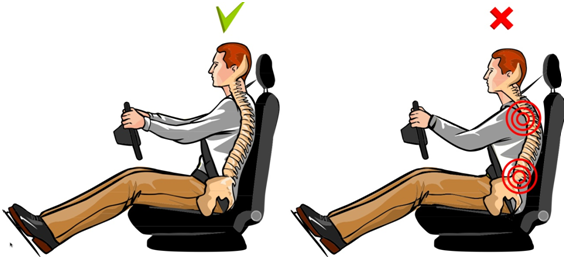
Contents
Driving and Ergonomics
Sitting in a car seat the same as sitting in a chair:
No, even though you are sitting, they are different activities. When you use the steering wheel, your hands and arms are higher than when you are working at a desk. To operate the brake and accelerator pedals, you have to extend your legs more forward than you would when sitting at a desk. One foot may be flat on the floor and the other at an angle to operate the accelerator and brake pedals. If your vehicle has a standard (manual) transmission, you must use the other foot on the clutch and one arm and hand to operate the gear shift.
In addition, your body experiences up-and-down vibrations from the car travelling on uneven or bumpy road surfaces and the body moves sideways when you turn on corners. Depending on how fast you accelerate or decelerate, you will feel a force on your body.
Can driving cause discomfort or pain:
Yes. Discomfort and lower back pain are frequent complaints reported by drivers. In the United Kingdom, the term “repetitive driving injury” (RDI) has been used. These injuries include foot cramps, low back pain, stiff neck, and sore shoulders from poor posture, stress, tension, and staying in one posture or position for a extended period. RDI is a form of a work-related musculoskeletal disorder (WMSD). See the OSH Answers on musculoskeletal disorders for more information.
Occupations are at risk:
Any person who spends a lot of time in a vehicle (car, truck, ambulance, etc.) is likely to experience aches and pains. Drivers tend to experience pain more often as it is more difficult to shift body positions while driving. However, passengers can also feel the same effects if they are sitting in a vehicle for prolonged periods without changing position or getting out of the vehicle and stretching or taking a break every hour or two.
Causes these aches and pains:
Causes include:
- Poor posture – from personal habit , or from an improperly adjusted or fitted seat
- Low frequency whole-body vibration in moving cars and trucks can contribute to effects on the lower back.
- The shape of the vehicle seat itself may put pressure on selected parts of the legs, back and buttocks. This contact can lead to pain or discomfort at pressure points and may affect blood flow to the legs and feet.
In general what do I need to know to improve driving comfort:
To be comfortable while driving, look for features such as the interior of the vehicle designed to provide postural and thermal comfort, sufficient “room” or space, acceptable noise levels, and adjustable features that allow the driver to fit the vehicle to their needs.
A vehicle’s interior must be adjustable so drivers of different heights and shapes can:
- reach the pedals and controls,
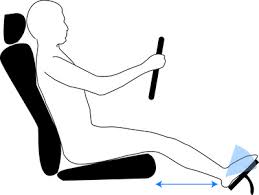
- have sufficient headroom,
- sit high enough to see out the front and side windows and mirrors,
- reach the steering wheel without stretching the arms.
The driver should have sufficient room (25 – 30 cm or 10 -12 in) between the steering wheel and his or her chest (breast bone) in order for the seat belt and air bag to provide the maximum safety protection in case of a crash. The steering wheel column should not interfere with leg movement or bump the knees when getting in and out of the vehicle or while steering and operating the pedals.
Selecting a vehicle:
Consider the following factors: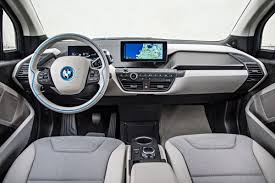
- Does it match requirements for the body size of the driver(s) and any physical limitations the driver(s) may have?
- Do the layout and ergonomic features of the vehicle (e.g., steering wheel, seat, pedals and other controls, displays) meet your needs?
- How much time per day does the driver use the vehicle and what distance does he or she drive per year?
- Does it have features that assist in the kind of work the driver does, e.g., an easy to load trunk for a salesperson who takes samples to clients?
If buying vehicles for a specific group of workers, ensure that they are able to provide input on the selection of vehicles.
Examine various aspects of a vehicle, such as:
Getting in and out the vehicle
- Are the door handles easy to grab and operate, including when the driver is wearing gloves?
- Does the open door provide enough space to get in and out easily (without stooping or banging your head on the door frame; and without bumping their knees on the bottom of the dashboard / instrument panel and steering column)?
- If the driver has to climb up and down to enter the vehicle cab, are the steps and handholds (or ladder and grab handles) located appropriately and designed to prevent slipping when if wet or snow-covered. If the step height is high (e.g., SUVs and pick-up trucks), does it have or can you add a running board?
Sitting in the cab
- Is it comfortable and sufficiently spacious for the occupant to sit in and maintain a neutral posture (i.e., in a position that places the least strain on the body)?
Seats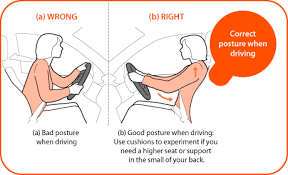
- Is the seat comfortable (if possible, drive for about an hour)? Is there enough headroom so you do not slouch or bump your head if the car hits ruts or potholes?
- Does the seat support the full length of your thighs and all parts of your back?
- Can you independently adjust the:
- seat height from the floor,
- seat cushion angle,
- seat back angle (tilt), and
- distance between the seat back and the steering wheel?
When properly adjusted , the driver should be able to reach the pedals, steering wheel and other controls without stretching the legs and arms and should have a good view of the instruments, gauges, and all mirrors, and a good vision through the front and side windows.
- Is the length of the seat pan (seat cushion) adjustable? There should be about 2-3 fingers width in the space between the front of the seat cushion and the back of the driver’s knee. If it is too long, it will exert pressure on the back of the knees, be uncomfortable, and may impede proper blood circulation in the legs and feet.
- Is the seat pan (cushion) contoured to better distribute the weight on the seat and prevent or minimize pressure points on the buttocks?
- Is most of the seat upholstered in a breathable material (for thermal comfort)? The edges of the seat pan and back can be finished in plastic or leather to minimize wear and to make it easier to slide in and out of the seat.
- Is the seat pan material ribbed? Horizontal ribbing on the seat cushion helps to prevent slipping forward and vertical ribbing in the back helps to prevent sideways movement.
- Will the seat and seat belt accommodate drivers who are wearing heavy winter coats or protective clothing?
Seat Back Rest and Lumbar Support
- Is the seat back rest high and wide enough to support your shoulders? The back rest should be shoulder-height and not interfere with rear-view vision.
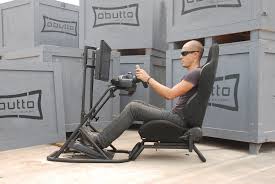
- Does the seat back rest have adjustable lumbar (lower back) support? The back rest should be in contact along the full length of the drivers back. The lumbar adjustments (in and out, up and down) will enable the driver to fit the back rest to his or her back and be more comfortable.
Seat Belt
- Does the vehicle have an adjustable shoulder belt anchorage on the B-pillar (the pillar between the front and back door) that can be moved up or down? This adjustment lets the person position the shoulder belt so that rests on the middle of the collar bone (clavicle) rather than on neck or off the shoulder.
- Does the vehicle have an auditory signal if the seat belt is not buckled?
Head Restraint (Head Rest)
Although commonly called a head rest, it should be called a head restraint as it is designed to restrict head movement when a vehicle is hit from behind. The head restraint offers more protection when it is close to the head as the restraint will come in contact with the head faster and the contact lasts longer during a rear-end collision. A well-designed head restraint will decrease the likelihood of the neck bending backwards and causing whiplash.
- Is the head restraint adjustable for height and for the angle forward and backward?
- Can the head restraint be locked in position? If not, the head restraint may move during a collision and the driver (and passengers) may experience whiplash.
- Is the head restraint in the most effective position?
- Height – as high as the top of the occupant’s head, but it should not be lower than 6 cm (about 2.5 in) from the top of the head (i.e., not lower than the height at the top of the ears)
- Back set – the distance between the back of the occupant’s head and the front of the head restraint – the head should be as close as possible to the head restraint: an acceptable distance is about 7 cm (2.75 in) or less but it should not be greater than 10 cm (about 4 in).
Air Bags:![]()
The air bag is an additional occupant restraint device and should never be considered a substitute for a seat belt. A seat belt alone can protect drivers from injury in slow speed collisions, without the air bag deploying. The air bag is designed to deploy in cases of higher speed, frontal impact. If an air bag is deployed while the occupant is not wearing a seat belt, injuries are likely to occur. An air bag alone will not prevent an occupant from being ejected from the vehicle.
- How many air bags are present?
- Does the vehicle have side air bags that can offer protection for the side of the torso in the event of impact from the side?
- Does the vehicle have curtain air bags that can protect the occupants’ heads sideways impact and from broken glass?
Steering Wheel
- Does the vehicle have power steering which requires less effort to use?
- Will the steering wheel adjust up or down, and in or out?
- Does the steering wheel have tilt-away feature to make it easier for the driver to get in or out of the car?
- Can the steering wheel be positioned so it does not obscure the display panel?
- Is the steering wheel column collapsible in case of impact?
Pedals and Gear Shift
- Does the vehicle have fixed or adjustable accelerator, brake and clutch pedals to accommodate leg length?
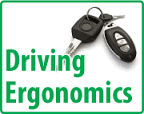
- Do the adjustable pedals have a retractor safety system that does not allow feet to be caught between the pedals and the floor?
- Are the pedals far apart enough to accommodate drivers with large footwear or winter boots?
- If a manual transmission, is the gear shift in a comfortable position and is it easy to shift in all gears?
Trunk
- Does the trunk lid open to give you adequate head space?
- Is the trunk floor a suitable height from the ground to enable the driver to load and unload the trunk without having to stoop or lean into it?
- Does the sill (or lip) of the trunk level with the floor of the truck so that a driver can load the trunk by sliding the item onto the trunk.
- How close to the trunk interior can you get; that is, how “thick” is the sill or bumper? Shorter distances are easier for loading.
- Is there a cargo net, anchor points, straps or other means for securing the load to the floor and prevent material from entering the passenger zone in case of a collision or roll-over?
- Is the back seat a folding seat or a split seat (either or both parts of the seat fold forward). Folding seats may be weaker than fixed back seats and may not secure a heavy load in the event of a severe frontal collision. This difference is the reason for needing properly installed anchor points or tie-offs in the trunk floor.

Car Environment:
- Does the vehicle have adequate temperature and humidity control systems (heating, air conditioning, ventilation, HVAC) to maintain comfortable conditions in both winter and summer seasons, and help maintain good vision by keeping the windows clear of fog or frost?
- Is the vehicle interior sufficiently quiet to enable easy communication with passengers in the front or back seat. Low noise levels also make driving more relaxing and less stressful.
How do I adjust the driver’s seat to fit me:
Read to vehicle manual and understand all the adjustments that you can do (e.g., seatposition, backrest angle, headrest position, steering wheel height and tilt, seat belt,mirrors). Common adjustments include:
1. Seat height – raise the seat as high as you can but still be comfortable. This height will optimize your vision through the windows. You should be able to see at least 76 mm (3 in) over the top of the steering wheel. Ensure that you have sufficient room between the roof and the top of your head. Adjust the mirrors after you have finished setting the other features.
2. Seat cushion length, if possible – adjust the seat length so that the back of your knees is about
3 – 6 cm (about 1-1/4 to 2-3/8 in) from the front on the seat.
3. Seat forward/back position – move the seat forward until you can easily push the pedals through their full range with your whole foot, not just your toes. You may have to readjust the seat height to get better control of the pedals.
4. Seat cushion angle – tilt the seat cushion until your thighs are supported along the full length of the cushion without there being pressure at the back of your knees.
5. Seat back rest – adjust the back rest until it supports the full length of your back when you are stilling upright. If you are leaning too far back, you may end up bending your head and neck forward, which may cause muscle fatigue, neck or shoulder pain, tingling in the fingers, etc.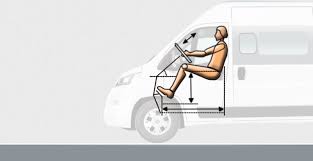
6. Lumbar support – adjust the lumbar support up-and-down and in-and-out until you feel an even pressure along your back from the hips to shoulder height. As this point, the seat back should feel comfortable and there should be no gaps or pressure points in the back support area.
7. Steering wheel – adjust the steering wheel for height or tilt and pull it back for easy reach. The centre of the steering wheel should be about 25 – 30 cm (10 – 12 in) from the driver’s breast bone. The closer you are to the air bag, the higher the possibility of injury if the air bag deploys, even if you are wearing a seat belt.
If your steering wheel can be tilted up-and-down, tilt it so the air bag behind the centre of the steering wheel is pointing to your chest, not your head and neck or your stomach. In addition, your arms should be in a comfortable position (not too high or too low).
8. Head restraint (head rest) – while sitting, raise the head restraint until the top of it is level with top of your head. If the head restraint can be tilted, adjust the angle of the head restraint until is practically touching the back of your head when you are in your sitting posture.
9. Fine tuning – you may have to go through steps 1 – 8 again if you need to optimize the way that vehicle cab fits you. You should be able to reach and operate all of the controls, pedals, the steering wheel, etc., and have good visibility through the windows and mirrors.
Dos and Don’t s -Driving
DO always wear your seat belt.
DO keep children in tested and approved car seats, no matter how much they beg or plead to get out. If you need, take frequent breaks so that little ones can stretch their legs.
DO review the official rules of the road for your jurisdiction periodically, and follow them always.
DO follow the speed limits.
DO pay attention when you are driving, even if you are familiar with the area. A surprising number of accidents happen only blocks from home!
DO be courteous toward other drivers.
DO give pedestrians the right-of-way in crosswalks.
DO make room for bicycles.
DO pay for your parking tickets or traffic tickets on time, unless you plan to contest them.
DO keep a winter survival kit in your car for bad weather conditions. A good survival kit should contain a cell phone, matches, flares, a working flashlight, food, water, and blankets.
DO make sure that your spare tire is in your car and that you have a working jack.
DO make time for routine preventative maintenance on your car. Breakdowns can be dangerous and costly.
DO plan your route out in advance for long car trips and keep a map or atlas in the car in case you get lost.
DON’T drink and drive, and don’t get in a car with a driver who has been drinking or using drugs.
DON’T make assumptions about what other drivers are going to do. Just because someone has their turn signal on does not mean they are actually going to turn. They may be like the rest of us, and have forgotten that it is on!
DON’T assume that other cars know what you are doing, either. Make sure that you use your turn signals and give yourself, and the cars around you, plenty of room to maneuver.
DON’T tailgate other cars, pass on shoulders, fail to yield, run stoplights or stop signs (even if no one else seems to be around), or break any other rules of the road on purpose. If you act like you are above the law when you operate a car, you will sooner, rather than later, find out that you are not.
DON’T play your car stereo so loudly that you are disruptive to others, or so loudly that you are unable to hear train signals or emergency vehicle sirens.
DON’T talk on your cell phone and drive at the same time. If you need to make or answer a telephone call while you are driving, pull over at a safe place, use the phone, and then resume your journey.
DON’T engage in other activities, while driving, that distract your attention or reduce your reaction time. Eating, changing clothes, or putting on makeup while driving is dangerous. In some states, if you are caught doing these things while driving you can be cited for “driver inattention” and given a ticket.
DON’T treat a car like it is a toy. It is not. Don’t use your car to play chicken, race, or give another car a friendly “tap.”
DON’T let your emotions and frustrations get the best of you. Don’t engage in road rage, no matter how irritating another driver might be to you.
DON’T leave valuables in your car, especially in places where they can be seen, no matter where you are parked.
Click the below link to know more details about Driving and Ergonomics
ergonomics-general vehicle-ergonomics-and-best-practice-guideCorrect seat position for car -Ergonomics
Ergonomics for Truckers driving
